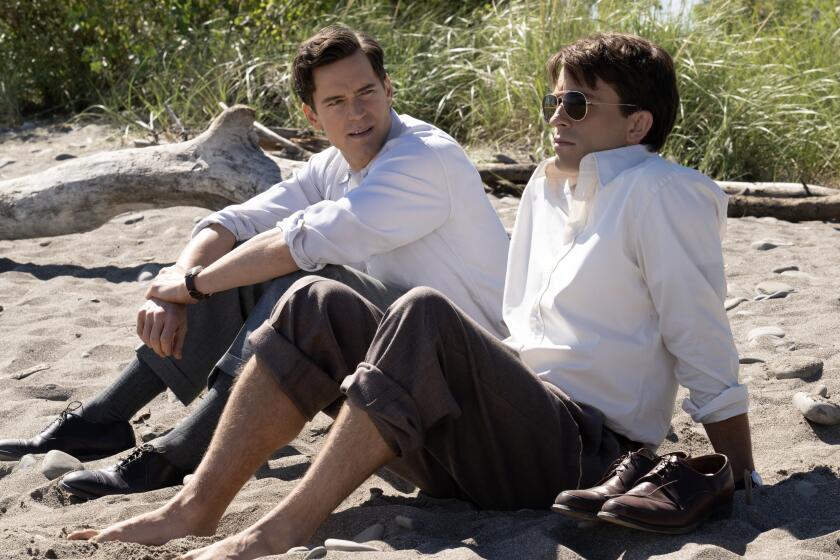Graphic and authentic, the sex scenes in ‘Fellow Travelers’ spotlight a dark chapter in LGBTQ+ history
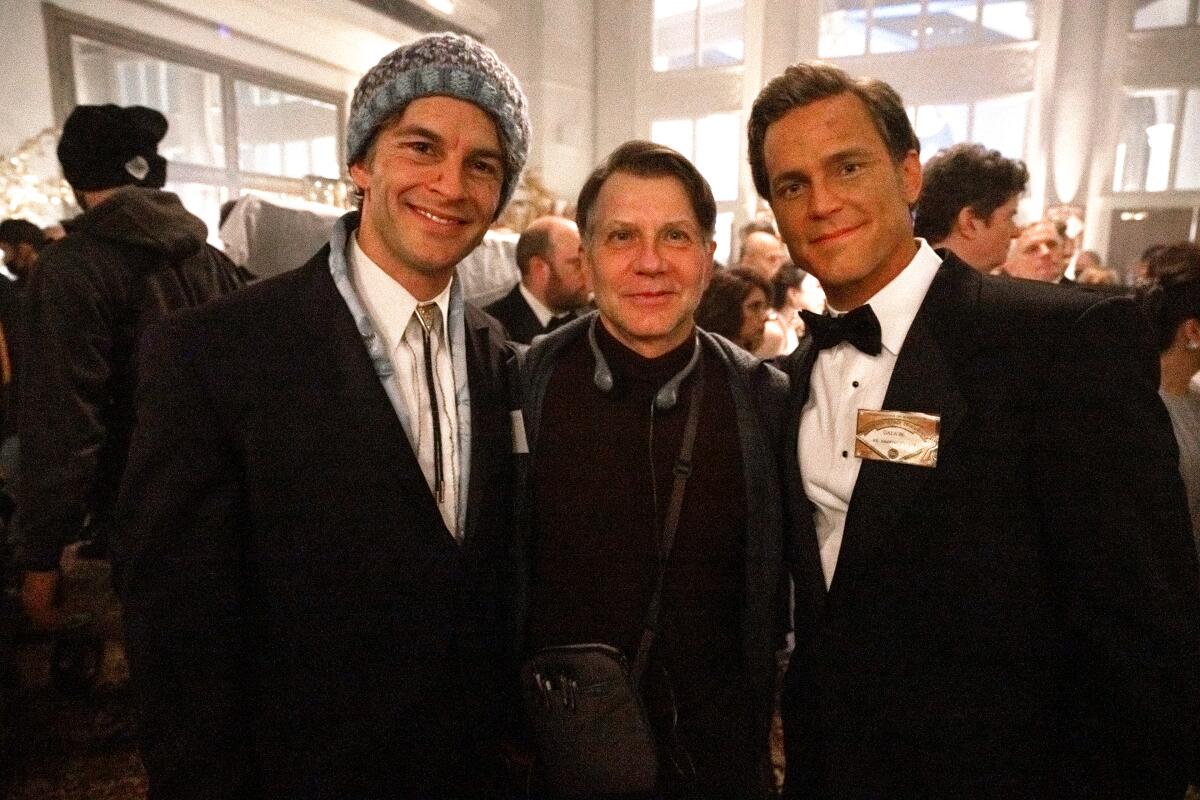
- Share via
Ron Nyswaner was a boy growing up in western Pennsylvania coal country when he saw a made-for-TV movie called “That Certain Summer.” Broadcast in 1972, it starred Hal Holbrook as a gay father struggling to come out to his teenage son.
“There’s a moment where Hal Holbrook says to his son, ‘Do you know what the word “homosexual” means?’” Nyswaner recalled on a drizzly fall morning in Manhattan. “I remember breaking out in a sweat; I was just paralyzed.”
“You have to imagine a world in which there are no gay characters on television, in films, in any book you’d read or any conversation you have. If you heard anything about being homosexual, it was derogatory. It was being called a [slur],” he added.
Over a four-decade career in film and TV, Nyswaner has told the kind of queer stories that were once vanishingly rare in pop culture. He was nominated for an Oscar for writing “Philadelphia,” the landmark AIDS drama that propelled Tom Hanks to his first Academy Award, and more recently wrote the screenplays for “My Policeman” and “Freeheld.”
The Lavender Scare and McCarthyism serve as the backdrop for Showtime’s “Fellow Travelers,” a miniseries based on Thomas Mallon’s 2007 novel that stars Matt Bomer and Jonathan Bailey.
“Fellow Travelers,” airing on Showtime, may be Nyswaner’s most ambitious project yet. An eight-part limited series adapted from Thomas Mallon’s novel of the same name, it stars Matt Bomer as Hawkins “Hawk” Fuller, a dashing war hero and State Department employee. At a Republican victory party on election night 1952, he meets Tim (Jonathan Bailey), an idealistic, young, anti-communist crusader and devout Irish Catholic who gets a job in Sen. Joseph McCarthy’s office.
They embark on a passionate but forbidden romance at the height of the Lavender Scare, a moment of intense peril for the LGBTQ+ community as McCarthy and his notorious legal counsel Roy Cohn attempted to purge “subversives and deviants” from the government. The atmosphere of paranoia and constant threat of discovery only seem to fuel their attraction to each other and, while the relationship does not last, their emotional ties to each other do.
The goal, Nyswaner said, was not to make a show about the oppression of gay people, but about “the danger of giving yourself to another human being.”
Unlike Mallon’s book, almost entirely set during the 1950s, the adaptation skips through the decades, from the repression of the Eisenhower era, through the liberation of Fire Island, to the anguish of the AIDS epidemic. It is both a sweeping romance — with graphic but authentic sex scenes that already have viewers abuzz — and a chronicle of queer history, depicting pivotal events including 1979’s White Night riots in San Francisco.
“I use the book as a starting point, but wanted to go beyond the book and watch our characters over 35 years,” said Nyswaner, showrunner and executive producer on the series, who finally came out as a senior in college in the 1970s. “And all hell broke loose,” he said, laughing. “I felt the joy and the celebration of the late ‘70s, the dancing and the sex. It was fantastic. And then came the tidal wave of AIDS” — a period when he said it felt like there was a sniper on the loose: “You didn’t know who was going to get picked off.”
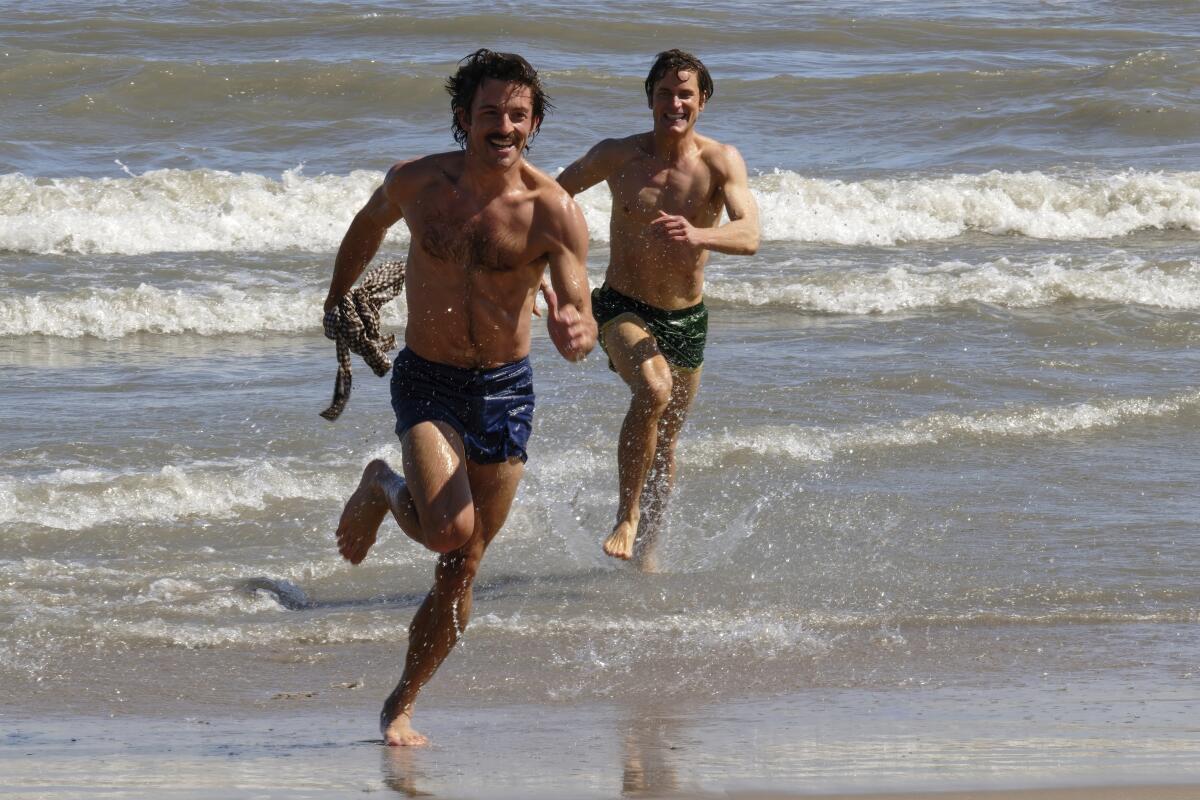
Nyswaner not only extended Hawk and Tim’s story beyond the narrower timeframe of the book, he also made them more central to the 1950s political plot and introduced characters who do not exist in the novel, like a gay Black journalist named Marcus Gaines (Jelani Alladin) and his lover Frankie Hines, a drag performer (Noah Ricketts).
“My job is not to treat texts as sacred. Reading and drama are very different things,” said Nyswaner, who has also written for “Homeland” and “Ray Donovan.”
Mallon was happy to take a hands-off approach to the series. “I never asked to see a script, and I never asked to go up to the set, even though all my gay friends were saying, ‘Are you out of your mind?’ You’re going to pass up a chance to meet Matt Bomer?” said Mallon.
Known for historical fiction like “Henry and Clara,” about the couple at the theater with Abraham Lincoln on the night of his assassination, Mallon gave Nyswaner just one note: Tim needed to be Irish American, as he is in the book, otherwise “nothing about him makes a lot of sense.”
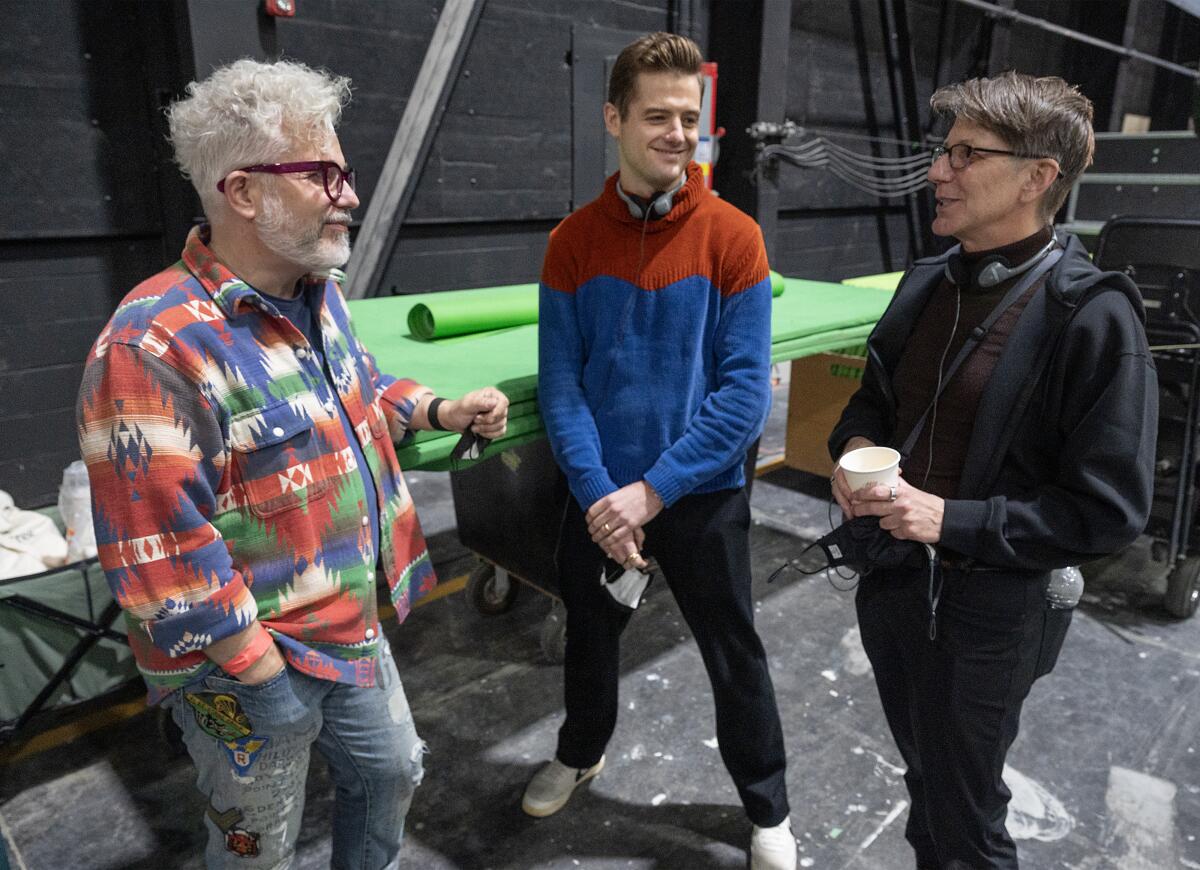
The core creative team for “Fellow Travelers” was made up of several generations of gay men who brought their individual experiences to bear on the source material. In addition to Nyswaner, the team included executive producer and director Daniel Minahan; writer and executive producer Robbie Rogers, who was the first openly gay man to compete in a top North American professional sports league, before moving into a film and TV career; and Bomer, who served as an executive producer and played the elusive Hawk.
Nyswaner sent the book to Rogers, who read it in a few days and was instantly intrigued by “a love story at a time when the stakes were so high,” he said. “When you have so much to lose, you hold on to love a little more tightly and those intimate moments are a little more special.” Rogers was closeted for part of his career as a professional athlete and could relate to their intense fear of discovery. “It felt that if I were to come out that I would not be accepted by my teammates, not accepted by anyone I loved,” he said.
A key part of the drama is the power-playing sexual dynamic between Hawk, who favors rough trysts with strangers to any form of emotional entanglement, and Tim, who is less experienced but also capable of using sex to get what he wants.
The series has already garnered attention for its boundary-pushing bedroom scenes — in the premiere, Tim sucks Hawk’s toes — but shock value was not really the point.
“It’s always important to me that sex scenes aren’t gratuitous, that they have a beginning, middle and an end. And they tell a story but they also reveal aspects of the characters,” said Minahan, who directed the first two episodes of “Fellow Travelers” and helped shape its look and feel. “We had a guiding principle for all those scenes, which is that each of them would be an exchange of power.”
“If they’re caught doing this, they can be arrested, they could lose their standing in the community, they could lose their job,” he added. “It was a vicious kind of time to be a closeted person. That’s why the sex feels important, because it’s a series about people who find each other against all odds and risk everything to be together.”
Minahan also came of age in ‘80s New York with the threat of AIDS ever present and could relate to the sense of mortal peril that Tim and Hawk experience on a daily basis. “My friends and I didn’t expect to live past 30, but we found each other. Personally, I felt like a time bomb. That’s a very unique experience for a young person.”
The intimate moments between Hawk and Tim are as moving as they are provocative. Rogers recalled being on set one day while Bomer and Bailey filmed a particularly tender slow dancing scene (with their clothes off). He started to cry.
“Of course, it’s sexy, because they’re both very handsome guys and beautifully lit,” he said. “But they get to share this very intimate moment inside their apartment. And I just found myself thinking of all the men and women that had to do this, they couldn’t go to their proms, couldn’t have normal first dates. I hope that the audience understands: The sex is very authentic, but it’s a very universal thing, people just wanting to have the time with their lover.”
Tellingly, perhaps, most of the creative team said they identified with the shy, reserved, devoutly Catholic Tim rather than the enigmatic Hawk, who keeps his religious and political beliefs as locked down as his emotions. (Nyswaner, meanwhile, calls Hawk “My ideal mate. That tells you everything you need to know about me.”)
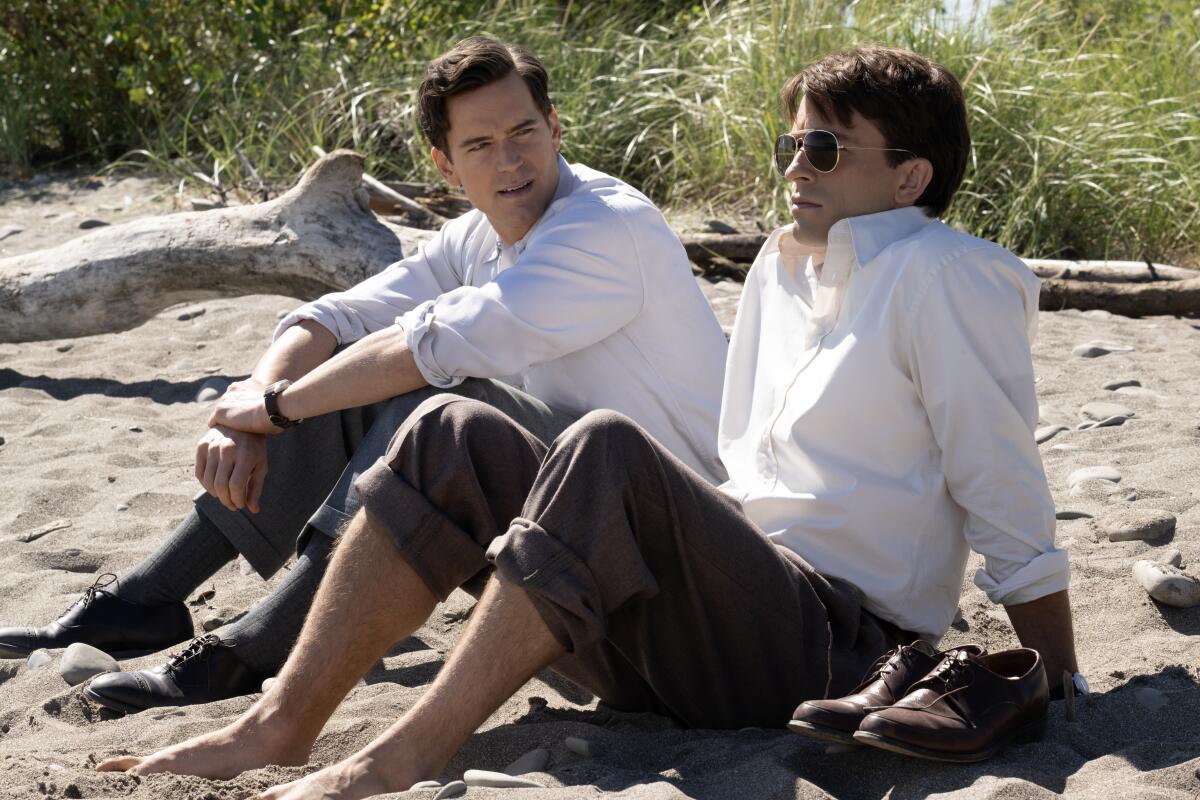
“I was just sort of very touched by Tim Laughlin’s conflict between spirituality and sexuality. I grew up Catholic, and I felt like this was a very interesting depiction of it,” said Minahan, who was unwittingly outed at 15 when his mother discovered letters he’d written to a boy.
The TV version of Tim is, Mallon said, “a little bit more of a handful” than in the novel. “When he says [to Hawk], ‘I’m your boy, right? And your boy wants to go to the party.’ I predict that will be a T-shirt on Provincetown next year.”
Mallon also thinks that, for younger people, the series will be “a revelation of just how bad those days were,” he said. “To a lot of older gay men, people who remember pre-Stonewall life, it will be not so much a revelation as a confirmation — they’ll remember just how hard those things were.”
More to Read
The complete guide to home viewing
Get Screen Gab for everything about the TV shows and streaming movies everyone’s talking about.
You may occasionally receive promotional content from the Los Angeles Times.
